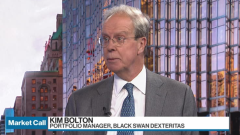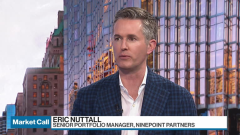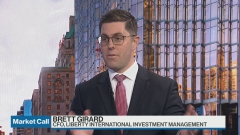Mar 21, 2023
What to Know Ahead of the Fed's Interest-Rate Decision
, Bloomberg News

(Bloomberg) -- All eyes in the financial and economic world will be laser-focused Wednesday on the Federal Reserve as Chair Jerome Powell tries to balance his fight against inflation against a sudden banking crisis.
Powell and his colleagues began their meeting Tuesday with the outcome unusually unclear. While most economists expect a quarter-point interest-rate hike, some say policymakers should pause to shore up financial stability.
“This tension is leading to existential angst,” said Derek Tang, an economist at LH Meyer/Monetary Policy Analytics in Washington. “Have they gone too far, or not far enough? Both could be true at the same time.”
Another important element of this week’s meeting: Policymakers are set to issue updated rate projections for the first time since December, offering crucial guidance on whether they still expect any additional hikes this year.
The decision and forecasts will be released at 2 p.m. in Washington. Powell will hold a press conference 30 minutes later.
Market Odds
As of Wednesday morning, markets were pricing in about 84% odds that the Fed will raise rates by a quarter point, to a range of 4.75% to 5%, the highest since 2007 on the eve of the global financial crisis.
Still, uncertainty over the decision is among the highest since the Covid-19 pandemic sparked emergency rate cuts in 2020.
Expectations for rate hikes among investors and economists have declined over the last two weeks, amid the collapse of three US regional banks and the takeover of Switzerland’s Credit Suisse Group AG.
Until the bank turmoil erupted, officials were expected to continue — or even potentially step up — their yearlong campaign to raise interest rates and dampen rising prices.
“The difficult thing for the FOMC at this meeting will be the tension between bringing down inflation and financial stability risks,” said Jonathan Millar, a senior economist at Barclays Plc in New York.
What Bloomberg Economics Says...
“There are no easy options. A pause could signal that the Fed is not confident in the resiliency of the banking system or the economy, or sees problems that aren’t yet visible to the market. On the other hand, a hike could add to bank stress and spook investors.”
— Anna Wong, chief US economist. For full analysis, click here
Goldman Sachs Group Inc. economists took a look at how the Fed has reacted during past episodes of financial stress.
“The historical record suggests that the FOMC tends to avoid tightening monetary policy in times of financial stress and prefers to wait until the extent of the problem becomes clear, unless it is confident that other policy tools will successfully contain financial stability risks,” economists Manuel Abecasis and Tim Krupa wrote in a note.
FOMC Forecasts
In early March, Powell said the policy group might raise rates higher than previously expected, indicating the “dot plot” could move above the 5.1% median forecast officials penciled in for the end of 2023. Recent tightening in financial conditions in the wake of the bank crisis, if it lasts, would suggest there’s less need to go higher.
“The difficulty there is not just what’s happening in the financial markets right now, but also estimating to what extent banks might curtail lending as a result,” said Sonia Meskin, head of US Macro at BNY Mellon.
Torsten Slok, Apollo Global Management chief economist, estimated that the crisis was equivalent to a 1.5 percentage-point increase in the Fed’s target interest rate.
The Fed could choose to suspend its projections as it did in March 2020, when Powell said “the economic outlook is evolving on a daily basis” due to the pandemic and writing down a forecast didn’t seem useful.
Releasing projections now “could just add more confusion than clarity,” said Diane Swonk, chief economist at KPMG LLP.
FOMC Statement
The FOMC statement is likely to see substantial changes, and the committee could choose to drop its pledge of “ongoing increases” and substitute softer or conditional language that still hints at further tightening.
The Fed will probably also say it’s “closely monitoring developments in financial markets and their implications for the economic outlook,” Millar said.
Dissents
With the FOMC facing tough choices, the judgment could prompt dissent, which has been rare in the past two years. A possible dovish dissent may come from Chicago Fed President Austan Goolsbee, while Neel Kashkari, the Minneapolis Fed president, could argue for a more hawkish move.
Balance Sheet
The Fed’s balance sheet, which had been steadily declining on the central bank’s gradual reductions of Treasuries and mortgage-backed securities, has rebounded to almost $8.6 trillion with the latest emergency actions to prop up the banking system.
Even so, the FOMC views its so-called quantitative tightening as a separate matter that’s happening in the background, and this is likely to continue with no changes, economists said.
“I expect that quantitative tightening will continue,” former New York Fed President Bill Dudley, a senior adviser to Bloomberg Economics, said in a Bloomberg Television interview.
Press Conference
Powell is likely to be grilled on how the latest turmoil affects financial conditions and the economic outlook and whether he sees a path to reducing inflation without causing a recession.
His job is to “clearly separate the financial instability issue and the measures taken to address that from the inflation problem and the strong economy,” said Ellen Meade, economics professor at Duke University and former senior Fed staff member.
He’s also certain to get tough questions on why supervisors at the San Francisco Fed failed to spot or head off problems at Silicon Valley Bank, which suffered losses on securities when interest rates rose. Senator Elizabeth Warren has blasted Powell for “an astonishing list of failures” that she says helped fuel the current crisis.
--With assistance from Catarina Saraiva, Jonnelle Marte, Rich Miller and Malcolm Scott.
(Updates with latest market-based rate-hike expectations in sixth paragraph.)
©2023 Bloomberg L.P.






